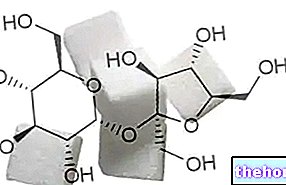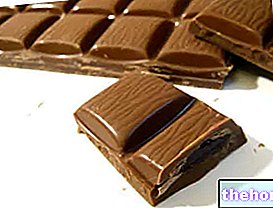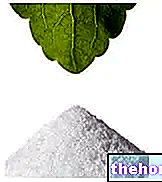How do you evaluate the sweetness of a sugar?
Sweeteners are natural or synthetic substances, capable of giving a sweet taste to the foods to which they are added. Their use, however, is not limited only to the food sector, but also extends to the medical - health sector; natural and synthetic sweeteners are for example used to impart a pleasant taste to medicinal or phytotherapeutic preparations introduced orally (syrups, herbal teas, infusions ...), but also and above all to replace sugar in diabetic and dietetic products .

To enhance the sweetening power, eliminate unwelcome aftertaste and avoid toxic effects from overdosing, mixtures of different sweeteners are very often used. The most used ones have an artificial origin (they are obtained in the laboratory by synthesis or semi-synthesis); this is the case of saccharin, cyclamate, acesulfame, sucralose and aspartame. Among the natural sweeteners, those most commonly used belong to the category of sugar alcohols; this is the case of sorbitol, xylitol and mannitol.
Substances with a much higher sweetening power than sugar are defined as intensive sweeteners. Thanks to this characteristic, intensive sweeteners are used in such low doses as to be irrelevant for caloric purposes; this is the case, for example, of aspartame, which despite having a caloric density of 4 KCal per gram, has a sweetening power 160-200 times higher than sugar.
Sweetening power of some artificial sweeteners
Sweetening power of some natural sweeteners
Carbohydrate: it does not significantly raise blood sugar, but it must still be consumed in moderation.
Due to the abundant presence of fructose, honey has a slightly higher sweetening power than refined sugar; it is however not recommended for diabetics, who must consume it in moderation.
Terpene extracted from licorice (Glycyrrhiza glabra); the sweet taste is perceived later but remains longer in the mouth. It can cause high blood pressure and edema when consumed in large quantities.
Polyalcohol: 40% lower calorific value than sugar; acaryogenic, useful for diabetics, can have laxative effects.
Polyalcohol: 36% lower calorific value than sugar; it can have laxative effects.
Polyalcohol: 60% lower calorific value than sugar; acaryogenic, useful for diabetics, can have laxative effects.
Fructose isomer with 45% lower calorific value than sugar; useful for diabetics, acaryogenic.
Protein extracted from the fruit of Dioscoreophyllum cumminsii, a tropical vine typical of the rainforest. It denatures at high temperatures.
Protein extracted from the fruit of Synsepalum dulcificum or Richadella sweetens, shrub native to East Africa. Changes the perception of taste, converting acid to sweet.
Protein isolated from the African fruit of the Thaumatococcus daniellii, whose sweetening action is very slow but persistent. Regularly admitted in European trade (E 957).
Steroid (steroidal saponins) isolated from the rhizome of Polypodium vulgare, called sweet fern or false licorice, widespread in temperate climates.
Protein isolated from the fruit of Pentadiplandra brazzeana, tropical climbing shrub.
Extracts of the fruit of Siraitia grosvenorii, perennial herbaceous climber native to Southeast Asia.
Terpenes: leaves of Stevia rebuidiana, used by the native Central and South American populations to sweeten the matè.
Vegetable substances with a high sweetening power can also be reproduced in the laboratory by exploiting the biotechnological sciences. Thanks to these techniques it is possible to transfer the genes that code for sweeteners to other plants, producing for example melons, strawberries or salads that are sweeter than normal.
Other Foods - Sweeteners Acesulfame K Aspartame Sugar beet Sugar cane Sodium cyclamate Dextrose Sweeteners Erythritol Fructose Maltose Mannitol Molasses Saccharin Saccharose Maple syrup Agave syrup Fructose syrup Glucose syrup Sugar sorbitol Articles Stevia Sucralitol sugar SWEETENERS Categories Alcoholic Foods Meat Cereals and derivatives Sweeteners Sweets Offal Fruit Dried fruit Milk and Legumes Oils and Fats Fish and fishery products Salami Spices Vegetables Health recipes Appetizers Bread, Pizza and Brioche First courses Second courses Vegetables and Salads Sweets and Desserts Ice cream and sorbets Syrups, liqueurs and grappas Basic Preparations ---- In the Kitchen with leftovers Carnival recipes Christmas recipes Light diet recipes tici Recipes for the Holidays Recipes for Valentine's Day Vegetarian Recipes Protein Recipes Regional Recipes Vegan Recipes

.jpg)


























